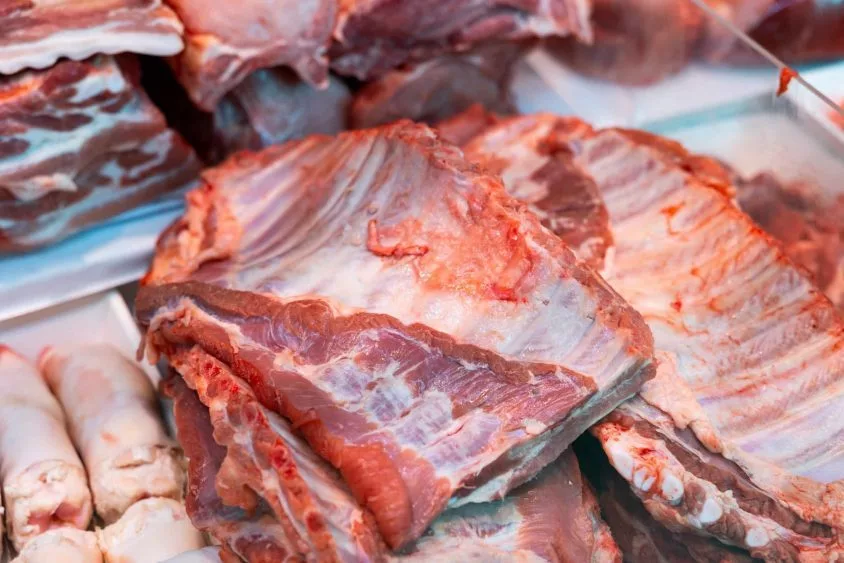
Due in part to a sharp decline in shipments to China, April exports of U.S. beef and pork trended lower than a year ago, according to data released by USDA and compiled by the U.S. Meat Export Federation (USMEF). China’s retaliatory duties are a major headwind for both U.S. beef and pork, while beef exporters face an additional obstacle. China has failed to renew establishment registrations for U.S. beef plants and cold storage facilities, the majority of which expired in mid-March.
Strong April beef demand from Korea, Central and South America
April beef exports totaled 100,659 metric tons (mt), down 10% from a year ago, while value fell 8% to $824.5 million. Exports to China declined nearly 70% and shipments also trended lower to Mexico, Taiwan and the Middle East. These results were partially offset by larger exports to South Korea, Japan and Central and South America.
For January through April, beef exports were 3% below last year’s pace at 411,027 mt. Export value was down just 1% to $3.35 billion.
“We expected beef shipments to China to hit a wall in April, due to the one-two punch of higher tariffs and expired plant registrations,” said USMEF President and CEO Dan Halstrom. “We are hopeful that these issues will be resolved soon and are encouraged by this week’s developments on trade negotiations with China. In the meantime, USMEF remains committed to market diversification and we have accelerated efforts to develop alternative destinations for cuts and variety meat items normally shipped to China.”
China’s total duties on U.S. beef peaked in April at 147%. The rate was lowered to 32% on May 14 when the U.S. and China agreed to a temporary de-escalation to allow for further negotiations. (Product that shipped prior to April 10 was allowed to clear without the additional 125%, provided it arrived by May 13.) President Trump spoke with Chinese President Xi Jinping on June 5 and said further talks will be held soon.
April pork exports slow to Mexico and China, trend higher to Colombia, Central America
Pork exports totaled 237,250 mt in April, down 15% from a year ago and the lowest in 10 months. Export value fell 13% to $675.3 million. Exports to China, which are mainly pork variety meats, declined 35% from a year ago. Shipments were also lower year-over-year to leading market Mexico and to Japan and Canada. But April was another outstanding month for pork exports to Colombia and Central America, which are both on a record pace.
For January through April, pork exports were 5% below last year’s record pace at 991,738 mt, while value fell 4% to $2.78 billion.
“China has been renewing registrations for U.S. pork establishments, but retaliatory duties remain a significant barrier,” Halstrom said. “Exports to Mexico cooled in April but keep in mind that the year-over-year comparison is with a record performance in April 2024. Year-to-date shipments to Mexico are fairly steady with last year’s record pace and demand elsewhere in Latin America is also very robust.”
China’s total duties on U.S. pork and pork variety meats peaked in April at 172%. The rate was lowered to 57% on May 14. (As with beef, product that shipped prior to April 10 and arrived by May 13 was allowed to clear without the additional 125%.)
Demand from Mexico keeps April lamb exports on upward trend
April exports of U.S. lamb muscle cuts totaled 257 mt, up 49% from a year ago, while value increased 15% to $1.44 million. Growth was driven by a near-doubling of shipments to leading market Mexico, which increased 97% to 118 mt. For the first time since 2014, shipments to Mexico have been above 100 mt for four consecutive months. For January through April, lamb muscle cut exports increased 31% year-over-year to 1,004 mt, while value was up 16% to $5.6 million, with shipments trending higher to Mexico and the Caribbean.
A detailed summary of the January-April export results for U.S. pork, beef and lamb, including market-specific highlights, is available from the USMEF website.



